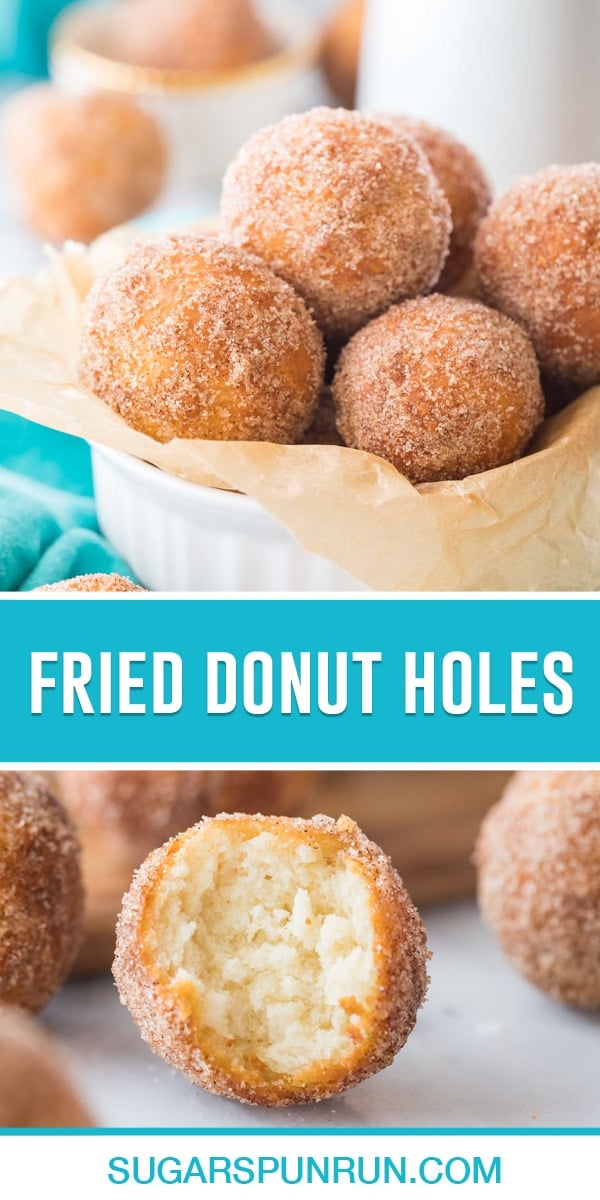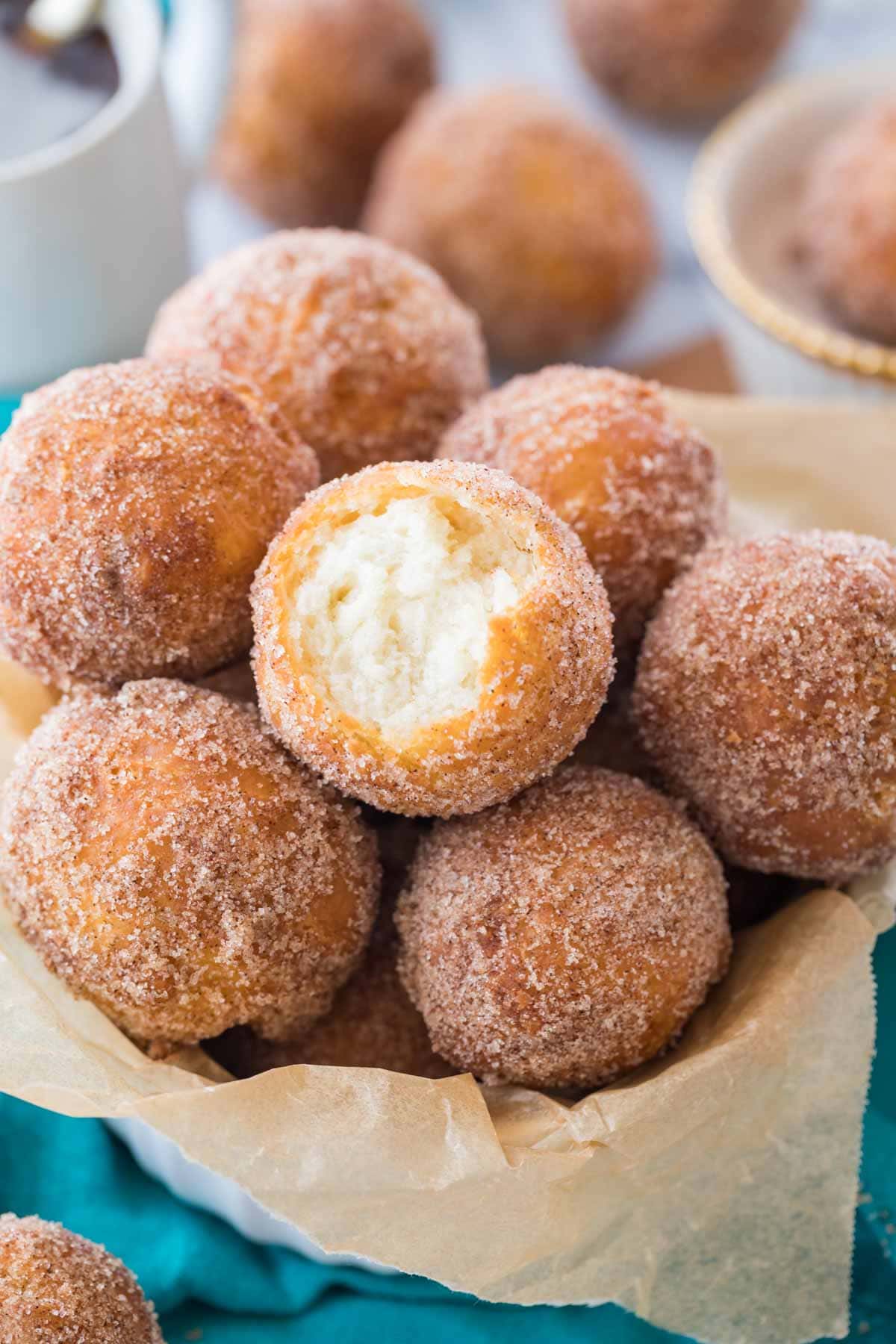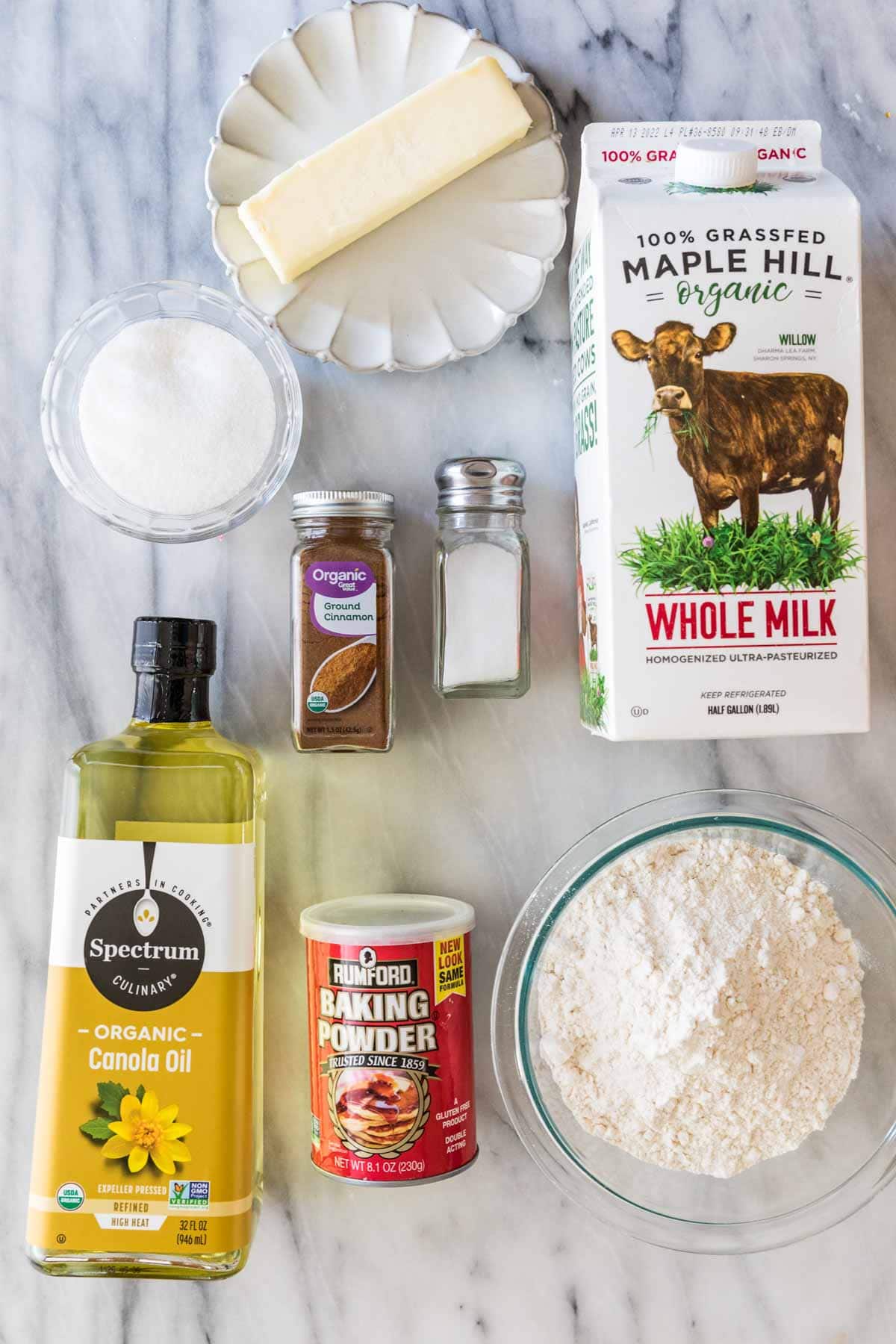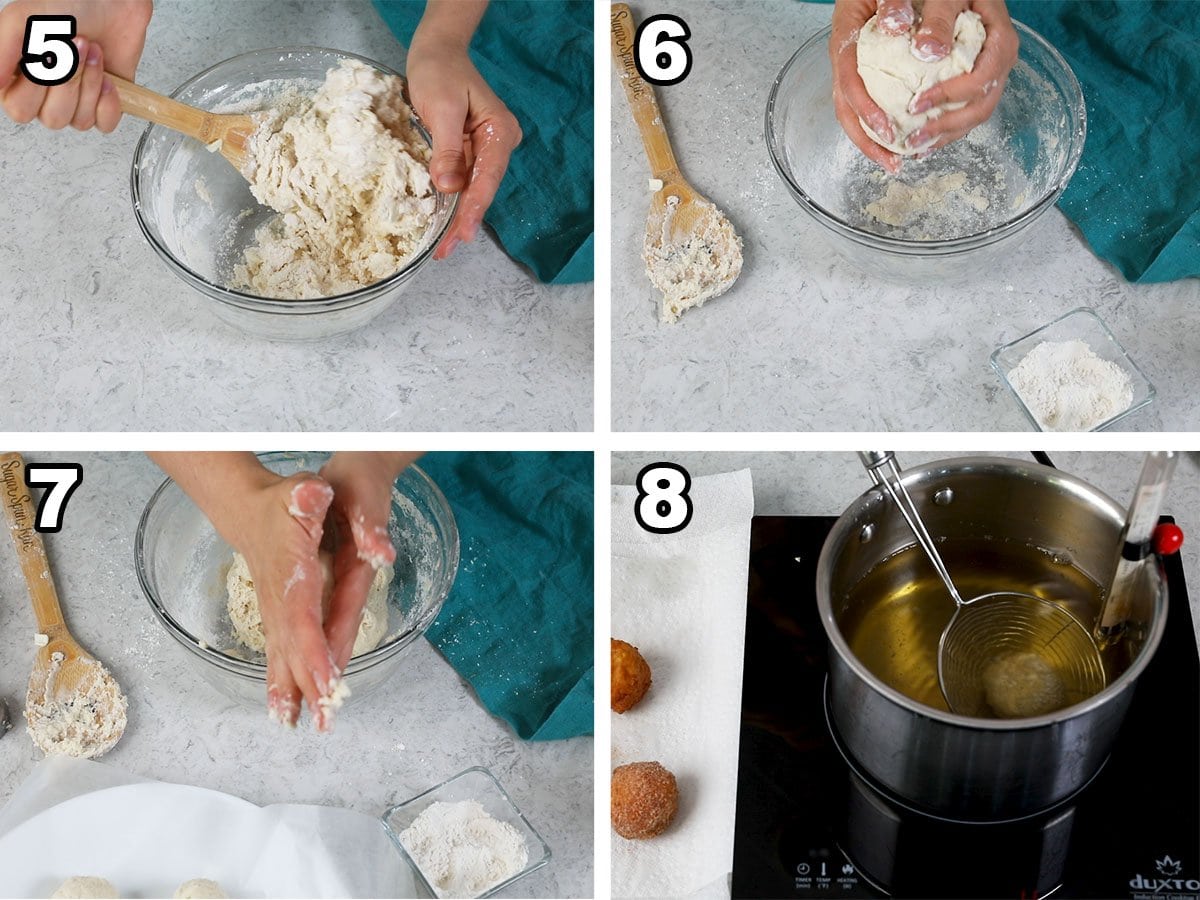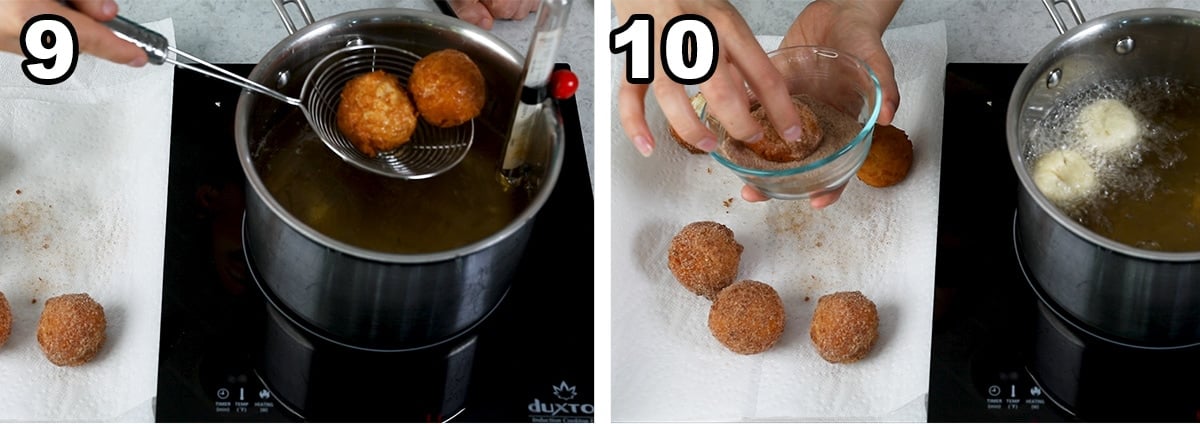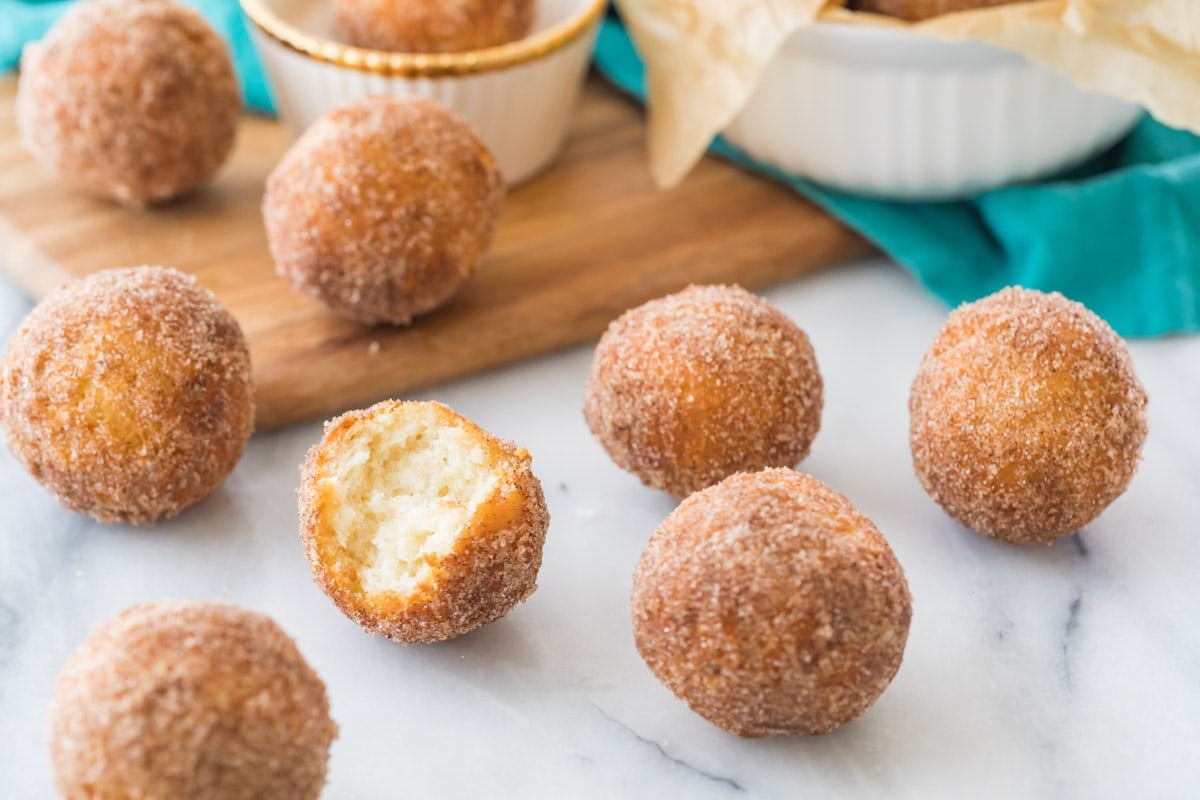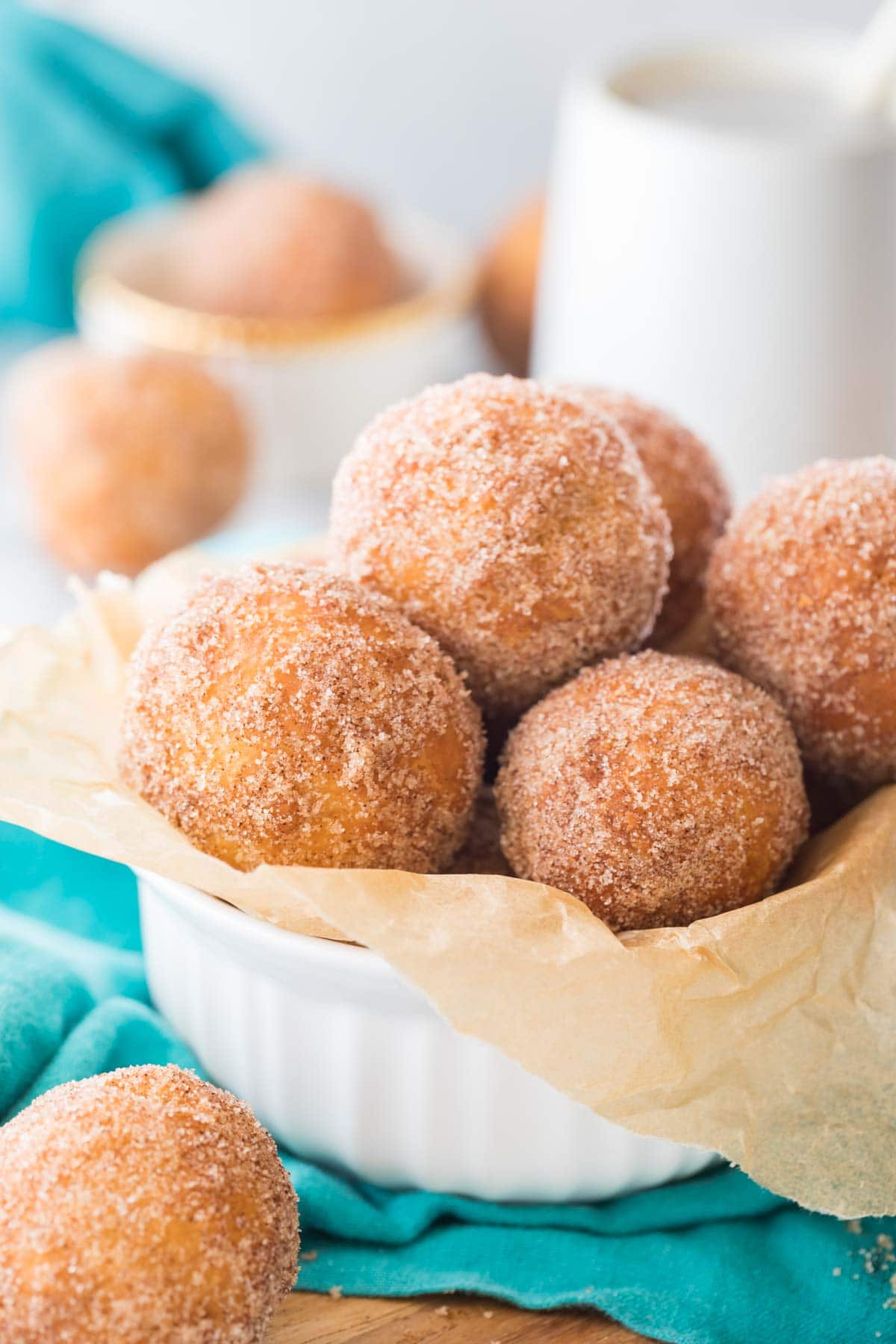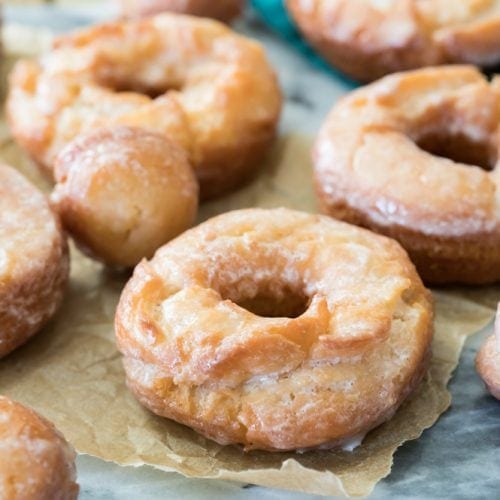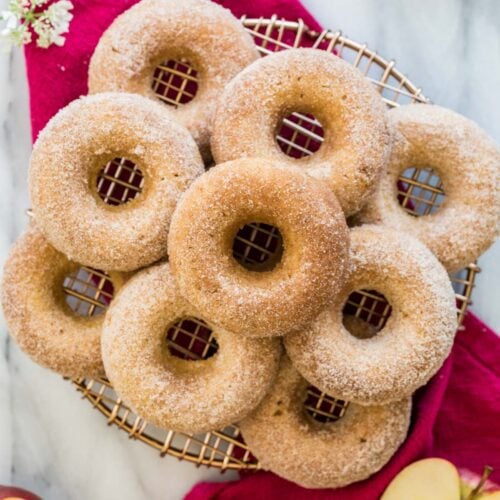An Easy Donut Recipe Without Yeast!
Today I’m sharing my favorite donut recipe — and it’s made without yeast. These simple donut holes are so quick and satisfying, you won’t even miss the yeast! They’re easy to make, with no proofing, kneading, or rising–simply mix, roll, and fry. I love rolling them in cinnamon sugar after frying, but they’re also great in confectioners sugar or just plain sugar too. Preparation-wise, these are very similar to my cinnamon rolls without yeast; though I borrow a technique from my biscuits and cut in the butter with a grater. I suppose you could even go the way of my scones and use a food processor instead–but I digress!
Why this is the BEST donut hole recipe:
Quick: Takes just 30 minutes to make.Flavorful: They truly melt in your mouth!Simple: Uses just a few pantry staples.Easy: No yeast makes prep a breeze!
If you’ve never fried anything before–don’t worry! I walk through all the steps in detail and I’m including a how-to video too. You’ve got this!
What You Need
Just eight basic ingredients make these perfectly poppable fried donuts. Let’s go over a few:
All-purpose flour. I do not recommend using self-rising or whole wheat flour. Make sure you know how to measure flour properly, or your donut holes could end up dense or dry.Milk. My preference is whole milk. You could use a non-dairy milk if you like, but your donuts might not be as tender.Butter. Use unsalted butter and make sure it’s VERY cold! I like to freeze my butter and grate it into my dry ingredients, but you can use a pastry cutter, fork, or two knives instead. Baking powder. Many of you have either asked if you can leave out the baking powder or substitute it with baking soda. This recipe needs baking powder and you cannot substitute baking powder with baking soda! I talk about this in detail in my baking powder vs. baking soda post if you’d like a full explanation. Oil. This is for frying. Vegetable or canola oil works well here.
SAM’S TIP: Oil temperature is critical for good results! Use a thermometer and monitor your oil temperature constantly; do not let the oil get too hot, and do not add your next batch of donuts until your oil comes back up to temperature! Remember, this is just an overview of the ingredients I used and why. For the full recipe please scroll down to the bottom of the post!
How to Make Donuts Without Yeast
SAM’S TIP: If the dough is too wet while you’re working it together on the counter, you can sprinkle in a bit more of flour. Make sure it’s well-combined and that you roll your donut holes into tight balls so they don’t disintegrate when introduced to the oil.
Troubleshooting
Dough that is too sticky/wet:
If your dough is wet and sticky and difficult to work with, don’t be afraid to add more flour! Do this once you transfer the dough to your countertop and begin to work it together. Sprinkle the countertop with flour and the dough and gently work the flour into the dough until it’s no longer wet and is easy to manage.
If they disintegrate/fall apart in the oil:
This is most likely due to the dough being too shaggy. While it’s important to not over-work the dough (this would leave you with dense, dry donut holes rather than fluffy, melt-in-your-mouth ones), it should cling to itself and you should be able to roll the dough into tight balls that hold their shape. If any dry bits of flour remain, they’ll cause the dough balls to fall apart when they are being fried.
Fried donut holes that are raw/gooey inside
There are several factors that could cause this. If you’ve been monitoring your oil temp (you should be!) then you may simply need to cook the next batch a bit longer. I always use my first batch as a gauge to know exactly how long I’ll need in the oil (the recipe provides a time, but oil temperature can fluctuate quite a bit depending on the amount used and the number of donut holes added to the pot, and if yours are a bit larger or smaller than indicated you may need to adjust your time accordingly). Note that this sometimes happens if your oil temperature is too high. The exterior of the donuts turns a deep golden quickly, making you think they’re finished cooking, but the interior hasn’t had time to cook through!
Dense/tough or greasy
Dense or tough means they simply were cooked too long or the dough was over-managed when it was being made. Greasy is typically a result of frying in an oil temperature that is too low. If you’re looking for a donut recipe with yeast, you NEED to check out my homemade donuts! Enjoy! Let’s bake together! I’ll be walking you through all the steps in my written recipe and video below! If you try this recipe, be sure to tag me on Instagram, and you can also find me on YouTube and Facebook
Related Recipes
This recipe was originally published April of 2016. I’ve updated the post to be more helpful and include notes and a troubleshooting section, updated the photos, added a video, and while the recipe remains the same I’ve edited it to be easier to follow.
